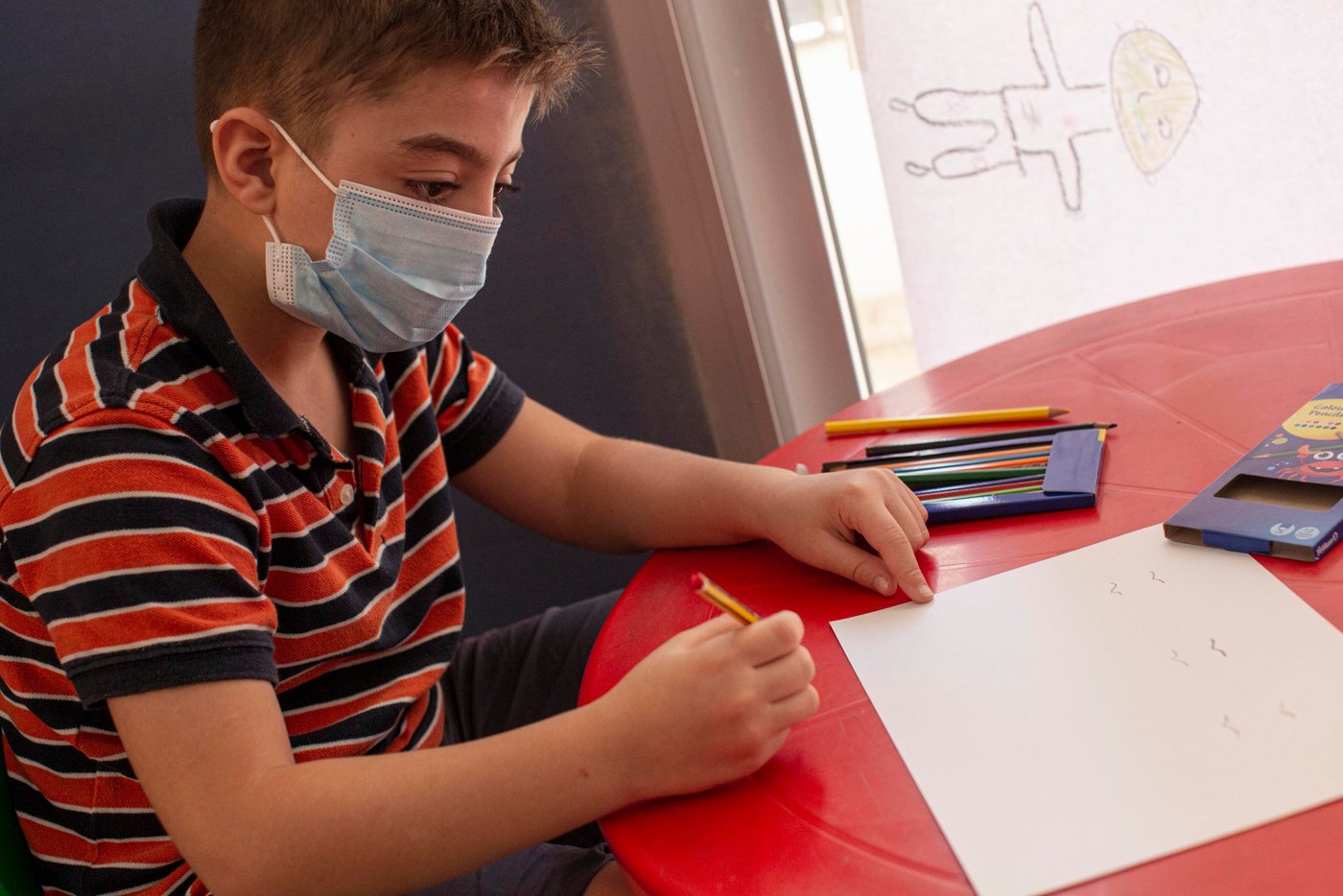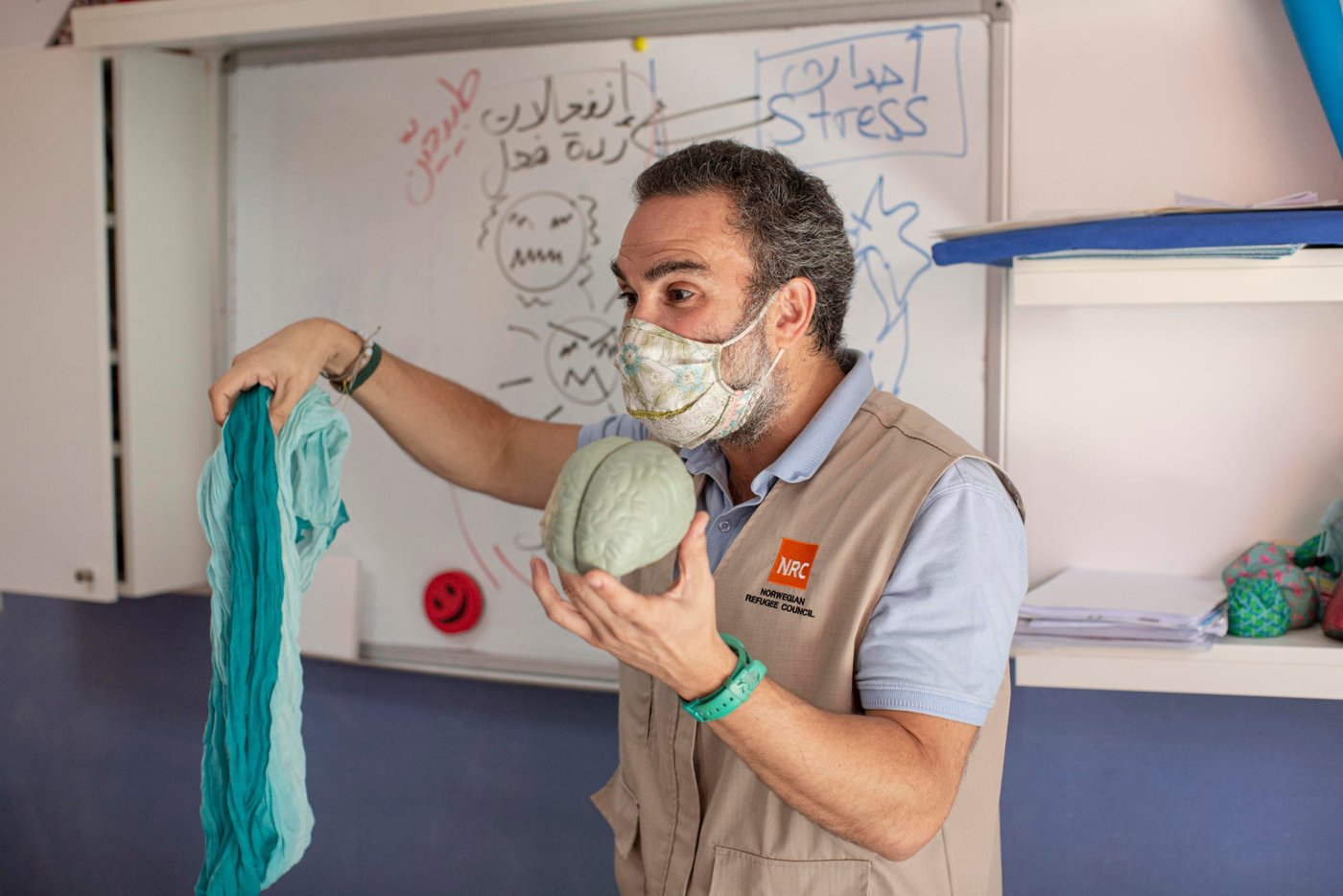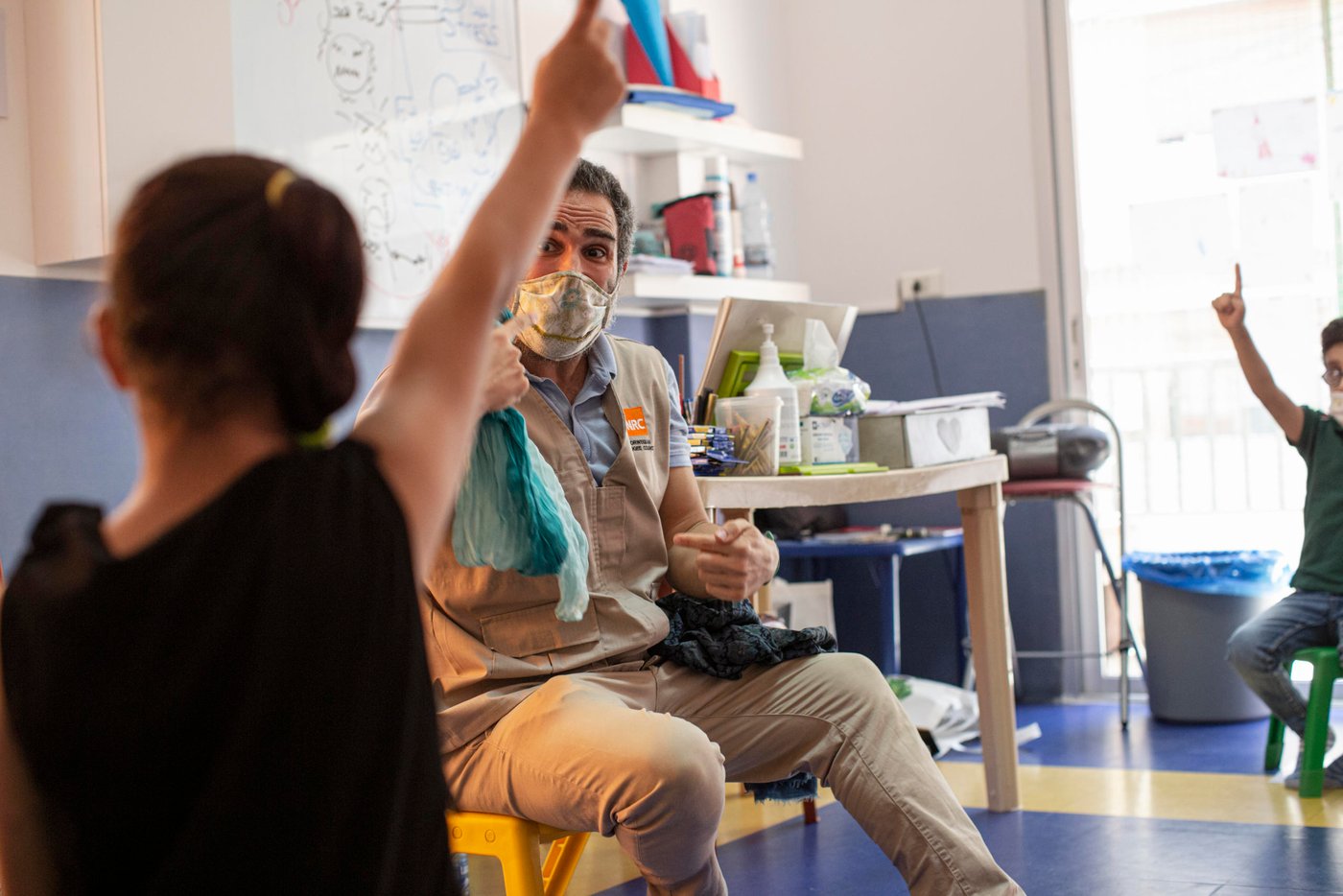Yousef Sarhan är en 10-årig syrisk flykting som bor i Beirut. Han och hans familj var hemma när explosionen inträffade.
”Min mamma satt utanför. Min pappa sov”, minns Yousef. ”Jag och min bror låg på sängen när vi hörde explosionen. Vi sprang ut och lade oss på marken. Jag var livrädd.”

Känslomässig nödhjälp
Yousef är ett av hundratals barn som deltar i NRC Flyktinghjälpens kurser för psykosocialt stöd. Kurserna startades som svar på explosionen i augusti.
För barn som Yousef, som bor i närheten av där explosionen ägde rum, var effekterna mycket påtagliga. Vissa barn har haft mardrömmar och inte kunnat sova. Vissa känner sig stressade och rädda för att en ny explosion ska äga rum.
Barn får ofta kämpa för att bearbeta och förstå den här typen av känslor på det sätt som vuxna gör. Våra kurser har med sina barnvänliga aktiviteter hjälpt barnen i Beirut att förstå sina känslor och sin oro bättre.

Får lära sig att förstå känslor
Chadi Zein är en av ledarna som hjälper till att ge emotionellt stöd vid NRC Flyktinghjälpens utbildningscenter i Beirut. Chadi välkomnar barnen till sessionerna, som äger rum varannan vecka, med varm entusiasm. När barnen anländer ombes de att peka på hur de mår på en skala: från jätteglad till jätteledsen, eller arg.
”Det är genom sådana här typer av övningar som barnen börjar lära sig att förstå och bearbeta sina känslor”, säger Chadi.
”Innan barnen kommer till centret vet de inte vad de känner. De kan leva i ett visst tillstånd, men förstår inte vad det är som de känner”, förklarar han.
”Men på centret får de lära sig att de här känslorna är normala. Ibland kan vissa händelser orsaka stress och barnen får lära sig vad de kan göra för att lindra den, så att de inte blir så störda av de här händelserna. Vid en viss punkt börjar det förändra deras liv.”
Barnen lär sig att integrera strategierna i vardagen så att de kan hantera stressiga situationer och göra bra ifrån sig i skolan.
”Barnen svarar fantastiskt fint. Varje barn tar det enligt sin egen takt och rytm”, säger Chadi.
”Effekten är positiv och fruktbar för barnen. Det ger dem verktyg för att klara sig bättre i konfliktsituationer. Hur man hanterar ilska, hur man hanterar rädsla, hur man hanterar labila tankar.”

Kurserna borde hållas överallt
Kurserna är tillgängliga för barn mellan 4 och 14 år. Det område som drabbades hårdast av explosionen är mångkulturellt och hittills har vi haft libanesiska, syriska, irakiska, sudanesiska, palestinska och filippinska barn på kurserna. Föräldrarna får möjlighet att anmäla sina barn till programmet om de tror att det skulle vara till hjälp.
”Föräldrarna frågar ’Vad är det ni gör med barnen? De förvandlas!’. De kan se hur barnet utvecklas”, säger Chadi stolt.
För många syriska flyktingbarn utlöste explosionen för sex månader sedan traumatiska minnen från tiden då de tvingades att fly. Dessutom har alla barn i Libanon (och runt om i världen) drabbats av störningar i vardagslivet till följd av covid-19-pandemin.
Chadi tycker att det skulle vara ovärderligt att lära alla barn att hantera oväntade och traumatiska händelser redan från ung ålder.
”De här aktiviteterna är något bland det viktigaste som en elev kan lära sig och inte bara i svåra tider. Den här typen av kurser borde hållas i alla skolor runt om i världen. De skulle bidra till fred i världen.”
***
Vår respons på explosionen i Beirut har möjliggjorts tack vare generösa gåvor från människor som du, som har skänkt bidrag till vår insamling. Vi vill också tacka norska utrikesdepartement, tyska utrikesministeriet och Europeiskt civilskydd och humanitära biståndsåtgärder för deras stöd.


